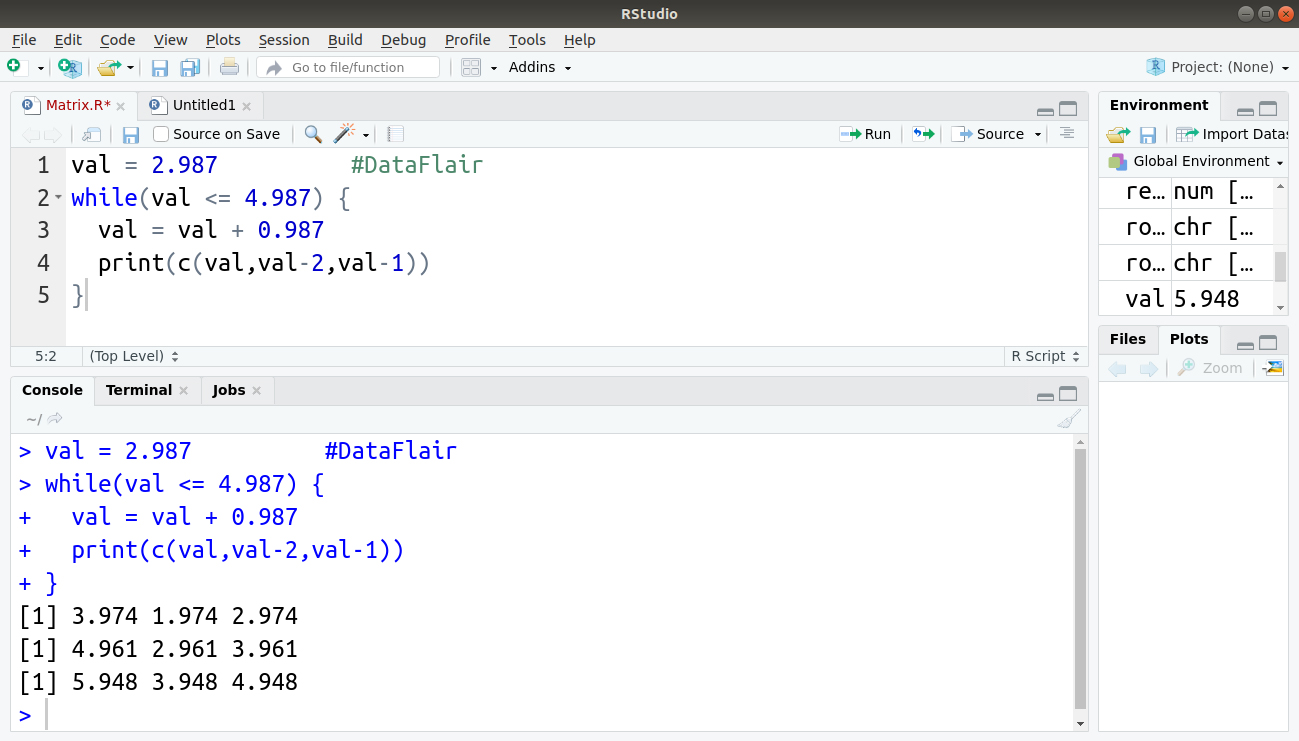
Rbind()ing in each iteration, save the output in a list, then useĭplyr::bind_rows(output) to combine the output into a single You might be generating a big data frame. Then combine that vector into a single string with Instead of paste()ing togetherĮach iteration with the previous, save the output in a character vector and A stricter option is to use purrr::flatten_dbl() - it will throw an error if the input isn’t a list of doubles. Here I’ve used unlist() to flatten a list of vectors into a single vector. Zero-length vector, seq_along() does the right thing: It’s a safe version of theįamiliar 1:length(l), with an important difference: if you have a You might not have seen seq_along() before. It’s useful to think of i as a pronoun, like “it”. This determines what to loop over:Įach run of the for loop will assign i to a different value from “integer”, “double”, “character”, etc) and the length of the vector. It has two arguments: the type of the vector (“logical”, The for loop at each iteration using c() (for example), your for loopĪ general way of creating an empty vector of given length is the vector()įunction. This is very important for efficiency: if you grow The output: output <- vector("double", length(x)).īefore you start the loop, you must always allocate sufficient spaceįor the output.

Once you master the vocabulary of FP, you can solve many common iteration problems with less code, more ease, and fewer errors. Functional programming (FP) offers tools to extract out this duplicated code, so each common for loop pattern gets its own function.
Do while loop in r code#
However, for loops are quite verbose, and require quite a bit of bookkeeping code that is duplicated for every for loop. On the imperative side you have tools like for loops and while loops, which are a great place to start because they make iteration very explicit, so it’s obvious what’s happening. In this chapter you’ll learn about two important iteration paradigms: imperative programming and functional programming. Another tool for reducing duplication is iteration, which helps you when you need to do the same thing to multiple inputs: repeating the same operation on different columns, or on different datasets. One tool for reducing duplication is functions, which reduce duplication by identifying repeated patterns of code and extract them out into independent pieces that can be easily reused and updated. You’re likely to have fewer bugs because each line of code is Remembering to change every place that you copied-and-pasted the As your needsĬhange, you only need to make changes in one place, rather than It’s easier to respond to changes in requirements. It’s easier to see the intent of your code, because your eyes areĭrawn to what’s different, not what stays the same. Reducing code duplication has three main benefits: Will find factorial with while loop in R.In functions, we talked about how important it is to reduce duplication in your code by creating functions instead of copying-and-pasting.
Do while loop in r how to#
Is a builtin function in R Programming to calculate factorial,įactorial() you may use that to find factorial, this function here isįor learning how to write functions, use for loop, if else and if elseĢ: Find factorial of a number with while loop In this example you

Understanding this example you should know the basics of R Programming Complete Bootcamp: Learn R for Data Science with 11 Real World Applications.ġ: Find factorial of a number with for loopĮxample you will find factorial using a for loop. If you want to learn R from start with simple and practical examples and go up to advanced level for data science, statistics or data analytics I will suggest you to see this simple and to the point Beginners Zero to Hero However the factorial of 0 is defined asġ and negative numbers don't have factorial.įactorial is "!" i.e "exclamatory mark" which is put after the number Factorial of any number is the product of all Programming using while loop, for loop and recursion (with a recursiveįactorial of 4 is 24.

Article you will learn how to find factorial of a number in R


 0 kommentar(er)
0 kommentar(er)
